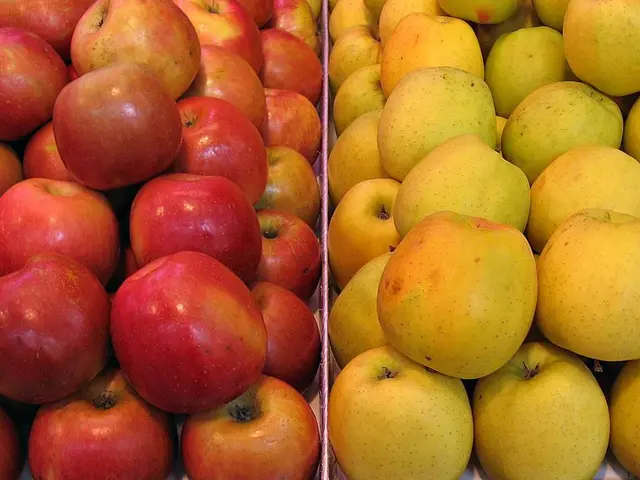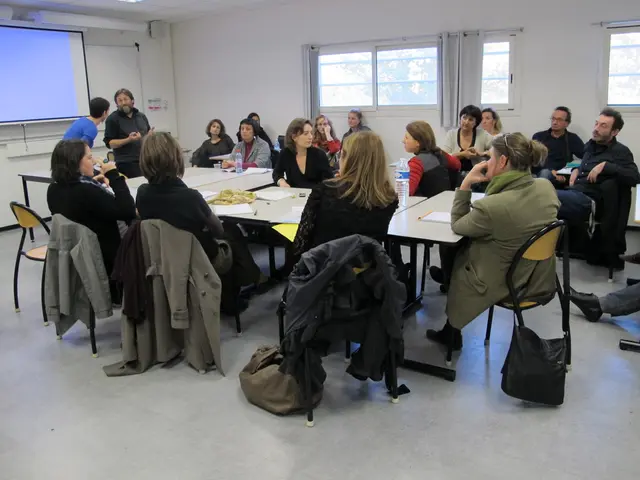Dance, Faith, and Identity Illuminated: The Odyssey of Rani Khanam
Rani Khanam's life-long passion for dance began at a young age, fueled by a keen ear for rhythm and an innate talent for movement. At four or five, she could hear melodies in the world around her and sway along in harmony. Faced with no hesitation or doubts, Khanam embraced her calling wholeheartedly when she expressed her desire to learn dance to her mother.
Losing her father at the age of five, Khanam's resilient mother served as the family's anchor, nurturing her daughter's creative spirit. In Delhi, Khanam formalized her dance training at Kathak Kendra, where she received a scholarship—a significant honor in 1978—that marked the beginning of her journey.
Khanam's debut performance occurred under a makeshift tent in Bihar at the tender age of six. Delighted by the beautiful hand-stitched dress she wore, Khanam gave an impressive performance that left audiences in awe.
As Khanam matured, she dedicated herself to learning under the legendary Birju Maharaj. However, a pivotal moment came when she began to question the authenticity of her own dance style, compared to her guru's. In 1998, during a performance in Indore, Khanam received critical acclaim for her unique interpretation of a Thumri, her guru's style clearly visible. This experience inspired her to forge her own voice in the world of Kathak dance.
Khanam's search for self-expression led her to explore fusion music, but she found these experiments not to her liking. In her quest for authenticity, she turned to Sufism, a philosophical and spiritual tradition that emphasizes unity, love, and the inner journey. Through the wisdom imparted by Sufism, Khanam found her artistic voice, crafting performances that blend classical Kathak with Sufi music and themes.
Khanam's approach to Kathak has gained her recognition as one of India's few accomplished dancers who perform to Sufi music. In her art, she showcases the shared spiritual essence between Sufism and Bhakti, two traditions that emerged in India during the 8th to 12th centuries as rebellions against orthodoxy. Khanam's teachings encourage her students to explore the artistic language and diverse ideas without restricting them to any single belief system.
For her upcoming performance at the NCPA, Khanam draws inspiration from the vibrant Sufi traditions of India, integrating Persian poetry, Baul music, and Hyderabadi Qawwali into her repertoire. In Khanam's eyes, her art serves as a mirror to the nation's soul—its vibrancy representing the vitality of its people.
In reflection, Khanam acknowledges the importance of her struggles and hardships in shaping her art. At 68, she continues to perform with a sense of ease and meditative soulfulness, feeling carried by the dance rather than working to produce it.
Sources:[1] Mishra, S. (2021). Rani Khanam: A Tribute to a Timeless Dance Legacy. The Hindu.[2] Jha, D. (2022). Aakash Odedra's 'Dhembe' mixes Kathak dance with social commentary. Scroll.in.[3] Das, A. (2020). Rani Khanam: A Collaborative Conversation. Online Stage.[4] Bhatia, V. (2023). Rani Khanam: Blending Sufi Mysticism with Kathak. The Wire.[5] Gupta, R. (2018). Kathak in the 21st Century: Straddling Tradition and Modernity. Orient Blackswan.
- Rani Khanam's dedication to dance expanded beyond traditional Kathak, leading her to pursue education and self-development in the realms of health-and-wellness, lifestyle, and personal-growth.
- On her travels, Khanam immersed herself in cultural-travel experiences, absorbing various influences that enriched her performances with a global perspective.
- In her journey of artistic growth, Khanam also embraced progressive ideas, promoting education-and-self-development in her teachings, encouraging her students to question and find their own unique voices.
- As a testament to her enduring passion for dance, Rani Khanam continued to influence the world of Kathak and the broader realm of science, epitomizing a life dedicated to exploration, personal growth, and the celebration of human spirit and diversity.








